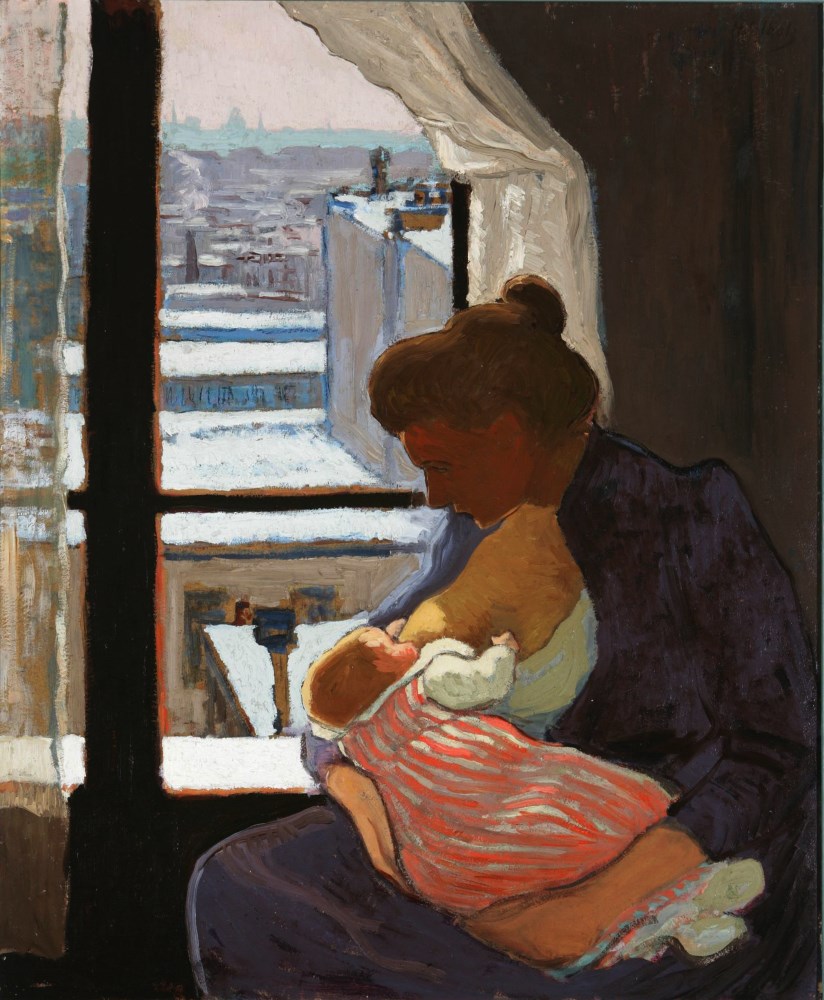Description:
Henri Ibels (1867-1936) after completing his studies at the École des Arts Décoratifs and the Académie Julian in Paris, the artist joined Paul Sérusier’s group of Nabis, or “prophets of neo-traditional art”, in 1889. He actively participated in their exhibitions and in the search for new forms of expression that aimed to revive symbolic art that showed inner meanings of phenomena. They sought inspiration in the traditions of decorative art, especially medieval and folk art, as well as in Italian quattrocento, Japanese woodcuts and the art of Paul Gauguin.
Around 1895, Ibels moved away from the group, looking for his own path, mainly in graphics and illustration, which was his main domain. However, in 1894, at his exhibition at the Galerie Bodinière in Paris, he also showed sculptures and fans. In 1899, he became involved in the Alfred Dreyfus affair, joining socialist Brianola and illustrating a number of anarchist publications. These were mainly caricatures, but also scenes from the life of the poor, which was the main theme of his earlier graphic works. They are characterized by a sketchy form with a distinct contour and a flat, uniform color patch. This brings his works closer to the technique used by the Nabis. Ibels was also a writer and a lecturer in the history of art and costume. In 1903 he was awarded the Legion of Honor.
Description of the painting:
Mother is one of the few oil paintings of the artist. Among them is also Love Forest in Pont-Aven (Petit-Palais Museum in Geneva) confirming Ibels’ contact with Paul Gauguin and the Pont-Aven group from which the Nabis derived. The Roulins painting shows both the influence of Japanese graphics and the painting of Maurice Denis, the creator of the neo-traditionalism theory, which is a Nabis manifesto. According to M. Peter Michalowski, the painting must have been created before Ibels parted ways with their group, since the “planar concept of space in two planes” is still readable in it.*
Comparing Ibels’ painting with Ignacy Pieńkowski’s Girl from nearly the same time gives an idea of the possibilities of conveying symbolic values by different ways of depicting. Despite the similar approach and two-level composition, Pieńkowski’s work, built with shimmering light and color, is directed to the interior, both in terms of space related to the place and in terms of spiritual focusing on the child’s experiences. However, Ibels’ work, in which the influences of Japanese art, with its planar-linear composition and subdued colors, opens up to the outside, to the depth of the impersonal view of the city with the silhouetted nursing mother outlined against it. However, the placement of the light accent on the child’s chest and head allows us to see in this painting a timeless allegory of motherhood, not just an expression of the aesthetic, decorative searches of the Nabis.


